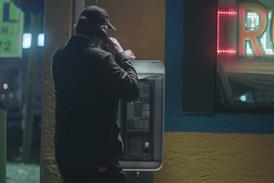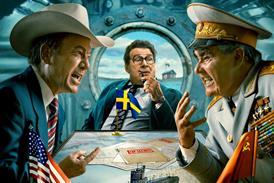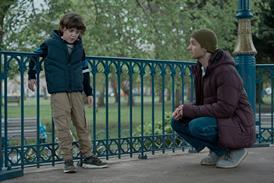OIL SPILL: THE EXXON VALDEZ DISASTER
Production company Smoking Dogs Films
The challenge To tell the story of the Exxon Valdez disaster in the teeth of an Alaskan winter
Shooting with a tapeless camera in one of the most punishing environments in the world would be a daunting enough adventure. When you consider that we were shooting with equipment not yet tried for shooting documentaries in such a climate, our challenges were even more considerable.
We set out to tell the story of how oil can wreak havoc on a fragile environment when mishandled. The story was going to take us across several climes, and by the time the film was commissioned we knew that we'd be shooting in the middle of the Alaskan winter to make the deadline for the show, timed to coincide with the 20th anniversary of the disaster in which 10 million gallons of crude oil were spilt in Prince William Sound.
We knew two things for certain: it would be very cold, and it would be white everywhere. These factors would determine the choice of camera: for a year we had been looking at a choice of film and tapeless cameras to shoot on.
We needed a camera that could deal with a terrain that was 100% white, but with detail. We carried out a number of tests on the Red, looking at the camera's 4K Raw files (the equivalent of a film negative) and its “proxies” as part the workflow from camera to post. The thing that struck us about the camera was that it had sharpness and an ability to reproduce detail that made it ideal for our shoot.
Producer David Lawson, my DoP Dewald Aukema and I had done a lot of work on digital cameras over the past 15 years, work that involved creating looks in camera. When we first looked at the Red it seemed to offer these possibilities. So the choice was whether to push the camera on location to create these looks or to do it all in post-production. We went for the former approach.
The shoot was not without its difficulties: it was snowing constantly, up to a foot every day with a very low cloud canopy. In winter the shooting window was only five hours if the weather was bright. The camera is not agile: add lenses, a matte box, drives and so on and it is the equivalent of a 35mm camera in weight.
We needed five to six people at a time to move the kit quickly. The set-up time for every scene was considerable - not ideal, combined with a five-hour shooting window. In the sub-zero temperatures on location we were able to stay out filming for a maximum of only 30 minutes at a time. However, the results on screen speak for themselves.
Oil Spill: The Exxon Valdez Disaster airs on BBC2 on 26 March at 9pm


























No comments yet